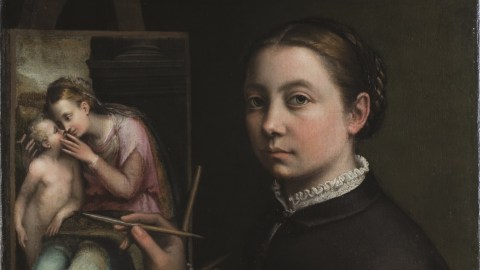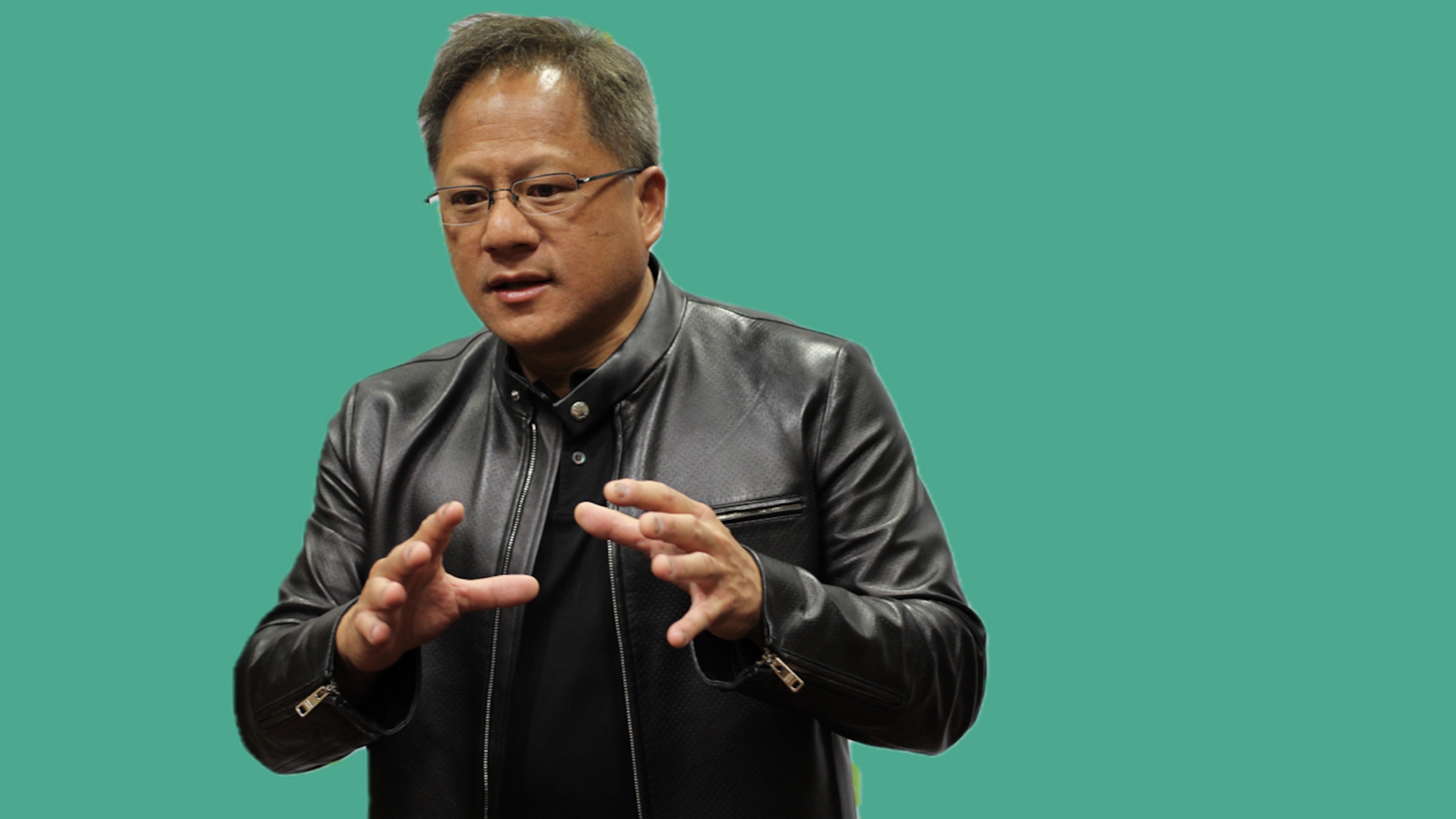Picturing Mary: Yesterday and Today

Christmas may be Jesus’ “birthday,” but, as any mother will tell you, his mother Mary really deserves the applause. Providing the humanity half to join with Christ’s divine side, Mary volunteered to play a part from the Incarnation to the Crucifixion to the Resurrection as everything from an active participant to an interested bystander, depending on your interpretation of Christian scripture. Picturing Mary: Woman, Mother, Idea, a new exhibition at the National Museum of Women in the Arts, Washington, DC, takes a closer look at how artists, especially women artists, depicted Mary in the more faithful past as well as how modern artists, especially women artists, still use Mary in the secular present. By making Mary the star of the show, Picturing Mary shines a light on how we see Mary reflects on how we see ourselves.
But why would the NMWA, an institution committed to the promotion of women artists, pick a figure such as Mary that’s seen by some as a poor feminist model, or at least the product of male-dominated Christian traditions in faith and art? Wilhelmina Cole Holladay, Founder and Chair of the Board of Trustees of the NMWA, explains in her foreword to the exhibition’s catalog that the idea for Picturing Mary started may years before the NMWA even opened. During a conversation with other women involved in the formation of the museum, one told Holladay, “[Y]ou simply must have an exhibition about the Virgin Mary. She has inspired the great artists throughout history and has been painted in every generation.” “That thought,” Holladay writes, “ever stayed with me.” The NMWA chose Marian scholar Monsignor Timothy Verdon, the director of the Museo dell’Opera del Duomo in Florence, Italy, to curate Picturing Mary in consultation with the NMWA’s chief curator, Kathryn Wat.
“How did people picture Mary?” Verdon asks in his opening catalog essay. “What sources shaped their mental image of this not easily imaginable woman, at once virgin and mother? What ideas did they associate with her?” From those deceptively simple questions, Picturing Mary presents 60 paintings, sculptures and textiles (many shown in the United States for the first time) on loan from the Vatican Museums, the Louvre, the Galleria degli Uffizi, and other public and private collections to examine how Mary has acted as the titular woman, mother, and idea since the 6th century.
Picturing Mary makes its point using some of the heaviest hitters of the Old Masters lineup: Michelangelo, Botticelli, Dürer, and Fra Filippo Lippi. It also finds a place for lesser known artists such as 15th century Italian artist Cosmè Tura, whose painting of the Madonna and Child related terracotta relief show Mary with exceptionally large hands and elongated fingers that seem odd to modern eyes but would have signified for the faithful of the time a kind of spiritual intensity. Many early depictions of Mary seem odd as artists struggled to strike a balance between Mary’s humanity and her divine connections through Jesus, ending up with a combination of humble handmaiden and regal queen. The black-and-red chalk drawing by Michelangelo in the exhibition (a possible study for statuary for the Medici Chapel) shows Mary nursing a very hungry baby Jesus, which reflects the Renaissance turn toward accentuating both Jesus and Mary’s humanity in order to foster the idea of her as the bridge between the human and the divine.
But as interesting as these male artists’ takes on Mary are, the more interesting approaches come from the exhibition’s quartet of women artists—Sofonisba Anguissola, Artemisia Gentileschi, Orsola Maddalena Caccia, and Elisabetta Sirani. The ladies are clearly outnumbered in Picturing Mary, as they are throughout art history as it fights to right that patriarchal wrong, but their contributions are powerful. Anguissola’s Self-Portrait at the Easel (detail shown above) captures in one single image many of the themes of Picturing Mary. Painted in 1556, this self-portrait shows Anguissola plying her trade as an artist—an unusual occupation for a woman of the time—as she paints the Madonna and Child in a tender, playful pose. “Here her careful attire and the grave dignity with which she wields her brushes may imply Sofonisba’s claim to a respect not only equal to that given male artists,” Vernon writes, “but similar indeed to the respect accorded the first painter of the Virgin, Saint Luke. For, quite apart from the question of divine inspiration, who better than a woman can ‘picture’ the woman Mary?”
Although Michelangelo and the first art historian Giorgio Vasari praised Anguissola’s talent and she even served as court painter to Philip II of Spain, Anguissola’s gender prevented her from the anatomy study and life drawing that men pursued to paint large-scale, multi-figure religious and history paintings—the blockbuster hits of the age. So, Anguissola gives us here the two genres left to her gender—portraiture and small-scale, devotional works. As Vernon asks, “[W]ho better than a woman can ‘picture’ the woman Mary?” Mary, thus, becomes a mirror for Anguissola and other woman artists constrained by social roles but straining against them as best as they can, subverting while seemingly conforming to the norm.
Vernon calls Aguissola’s work “a personal testimonial,” but, as Melissa R. Katz points out in the final catalog essay, “Mary, the Mirror: Sacred Imagery and Secular Experience,” Mary continues to serve not just as a mirror, but also as a means of expression for women artists. “For better or worse, visual depictions of the Virgin Mary offer a rare sustained portrait of womanhood across three millennia, albeit one heavily shaped by male perceptions of an ideal persona,” Katz writes. “But we work with what we have, knowing that if Mary is not our exact mirror, we can at least discern some family resemblance.” Women artists need to use Mary for the simple fact that she’s the oldest, most enduring female figure—for good or ill—in Western civilization. However, the beauty of Mary as subject is her plasticity. “If we see in her framed face a tired parent rather than a submissive paradigm,” Katz argues, “we are merely demonstrating Mary’s long tradition of adaptability to the needs of those who need her.” If modern women artists need a heroine, Mary—woman, mother, and idea—is diverse and deep enough to fit the role.
For Katz, “[m]ore surprising than [Mary’s] persistence in the religious imagination is her presence in the contemporary art world. Where other sacred personages have faded to footnotes, the Virgin Mary has found renewed relevance as a feminist icon, spiritual touchstone, and banner of political identity.” Katz cites Grayson Perry, Betye Saar, Kiki Smith, and Catherine Opie as just some of the contemporary artists riffing on the Madonna. Zineb Sedira’s Self-Portraits or The Virgin Mary“is one of the most poignant artworks to touch on this theme” for Katz in the way that it “invokes the common garments once worn by women of faith around the world, but now associated primarily (and often pejoratively) with Islam” and “also reminds us that Muslims have just as much claim to the Virgin Mary as Christians, or Jews for the matter.” Although the majority of the works in Picturing Mary look back, Katz’s essay powerfully proves that Mary is not only present in art today, but also might be the key to women’s art in the future. Katz concludes, “The figure of Mary, ambiguous, recognizable, and profoundly visible, can help provide a bridge between the legacy of Western culture and the generations poised to inherit it.”
In searching for an older work of “religious religious art so extraordinary and compelling that it transcends all categories of faith and belief, and makes its meaning felt in ways that are both personal and universal,” Katz came upon the Vierge ouvrante, or Triptych Virgin. What makes that triptych so special is that each sculpture is a doorway to more images inside. Likewise, Picturing Mary: Woman, Mother, Idea is a doorway through the imagery of Mary of the past to a new understanding of how that imagery can be seen and used in the future, most importantly by women artists who can use the concept of Mary as a human with divine connections to make their own connections to the modern world.
[Image:Sofonisba Anguissola, Self-Portrait at the Easel (detail), 1556; Oil on canvas, 26 × 22 3/8 in.; Muzeum-Zamek, Łańcut; inv. 916MT.]
[Many thanks to the National Museum of Women in the Arts, Washington, DC, for providing me with the image above from, a copy of the catalog to, and other press materials related to Picturing Mary: Woman, Mother, Idea, which runs through April 12, 2015.]
[Please follow me on Twitter (@BobDPictureThis) and Facebook (Art Blog By Bob) for more art news and views.]





